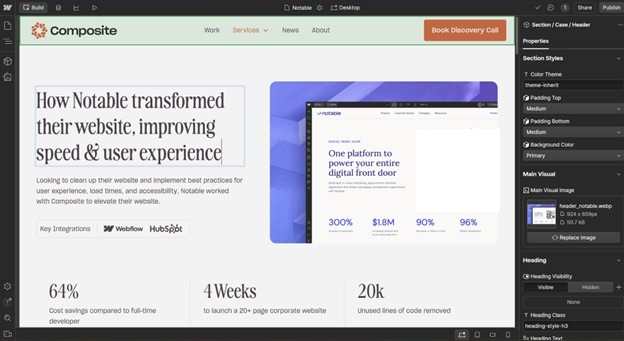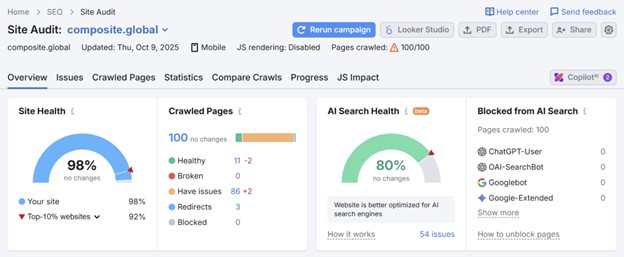Your online store gets about three seconds to make an impression. Poor design choices cost you customers every single day. Most Ecommerce business owners need fresh graphics, updated product images, and polished branding materials. But hiring a full-time designer comes with hefty salaries and overhead costs.
Most of the businesses save significant time when they bring specialized support on board for creative tasks. EcomVA offers a different approach. Their design services virtual assistant team handles everything from logo creation to complete website layouts without the traditional employment burden. Read on to learn more:

What Exactly Does a Virtual Assistant Graphic Design Professional Handle?
A graphic design virtual assistant brings specialized skills to your business remotely. These professionals manage all visual elements that customers see when they visit your store.
Their responsibilities cover multiple areas:
- Brand Identity Work: Logo creation, color scheme matching, typography selection
- Website Visual Elements: Navigation buttons, feature graphics, call-to-action designs
- Product Presentation: Photo editing, background removal, size optimization
- Marketing Materials: Social media graphics, email templates, promotional banners
EcomVA’s Web Design Virtual Assistant team understands Ecommerce platforms specifically. They know what works on Shopify, what converts on Amazon, and what engages customers on WooCommerce.
How Do Virtual Design Services Differ from Traditional Hiring?
Traditional hiring means posting jobs, reviewing hundreds of applications, and waiting weeks to fill positions. Virtual assistant services eliminate most of these headaches.
Speed of Deployment
EcomVA can match you with a virtual assistant graphic designer within days. No lengthy recruitment process or waiting periods.
Flexible Engagement Models
Some months you need 40 hours of design work. Other months, just 10 hours. You pay for productive hours, not idle time.
Lower Cost Structure
Full-time designers in the US command salaries between $50,000 to $80,000 annually. Add benefits and equipment costs. A graphic designer virtual assistant costs a fraction of that amount. EcomVA clients report saving up to 75% on operating costs.
Access to Diverse Skills
Virtual assistant teams bring specialists for each area:
- Logo designers for brand identity
- Web designers for layout optimization
- Product photographers for image enhancement
- Marketing graphic creators for promotional content
What Should You Look for When You Hire Graphic Designer Support?
Not all virtual assistant graphic design services deliver the same quality. Smart Ecommerce owners evaluate several factors before committing.
- Portfolio Quality: Look for designs similar to what your brand needs. Previous work samples reveal actual capabilities.
- Ecommerce Experience: Designing for online stores differs from general graphic work. Product images need specific formatting. Category banners require conversion-focused layouts.
- Communication Standards: EcomVA maintains availability that matches US business hours. Quick responses keep work moving forward.
- Tool Proficiency: Your virtual assistant should master Adobe Creative Suite, Figma, Sketch, and Canva based on your project requirements.
- Revision Policies: Clear revision processes ensure you get exactly what you envisioned. EcomVA includes reasonable revisions in their service packages.
Why Are More Startups Choosing Virtual Assistant Graphic Design Services?
Startup budgets rarely accommodate full creative teams. Virtual design support offers the perfect solution for growing businesses.
New product launches need promotional graphics fast. A virtual assistant graphic designer can produce multiple versions for A/B testing. Store owners learn what resonates without major delays.
Key benefits include:
- Quick scaling during holiday shopping seasons
- More time for strategy instead of selecting fonts
- Professional appearance that builds customer trust
- Reduced operating expenses compared to traditional hiring
When you Hire Graphic Designer support, creative tasks move off your plate. Energy goes toward business growth instead. EcomVA has served over 350 Ecommerce businesses ranging from solo entrepreneurs to established stores.
What Services Does EcomVA’s Design Team Actually Provide?
EcomVA offers comprehensive visual support that covers every aspect of Ecommerce design needs.
| Service Category | What’s Included | Typical Turnaround |
| Logo Design | Brand identity creation, color palette, multiple formats | 3-5 business days |
| Website Design | Full layouts, mobile responsive, SEO-optimized | 7-10 business days |
| Product Images | Photo editing, background removal, optimization | 24-48 hours |
| Marketing Graphics | Social posts, email headers, banner ads | 1-2 business days |
● Logo Design Services
Your logo represents everything your brand stands for. EcomVA’s team creates designs that work across all platforms. They consider how logos appear on websites, social media profiles, and promotional materials.
● Website Layout Development
A web design virtual assistant structures pages for maximum engagement. Navigation flows logically. Mobile users enjoy the same quality experience as desktop visitors.
● Product Image Enhancement
Poor product photos kill conversions. Customers cannot touch items when shopping online. Images become their only reference point. EcomVA’s team ensures every product looks its absolute best.
How Does the Collaboration Process Actually Work?
Every project starts with understanding your vision. What message should the design communicate? Who is your target customer?
The process follows clear steps:
- Initial Discussion: Share your requirements and expectations
- Draft Delivery: First versions arrive according to agreed timelines
- Feedback Round: You review and provide specific comments
- Revisions: The graphic designer virtual assistant implements your suggestions
- Final Delivery: Designs arrive in all necessary formats
Final files include PNG for web use, vector files for printing, and different sizes for various platforms. Future minor adjustments get handled quickly. The best results come from ongoing relationships where your virtual assistant graphic designer learns your brand preferences.
What Results Can You Expect from Virtual Design Support?
EcomVA clients report measurable improvements across multiple business metrics.
- Faster Time to Market: Some stores cut their launch timelines by half after bringing virtual design support on board.
- Higher Conversion Rates: Professional product images increase purchase confidence. Better website layouts guide visitors toward buying decisions. Stores often see conversion improvements between 15-30%.
- Reduced Operating Expenses: Virtual assistant graphic design services eliminate salaries, benefits, equipment, and workspace costs.
- Improved Brand Consistency: One team handling all visual elements ensures cohesive branding across every customer touchpoint.
- More Time for Strategy: Business owners spend less time managing creative tasks. That time shifts toward planning growth and building customer relationships.
Ready to Transform Your Visual Presence?
Ecommerce success depends heavily on visual appeal. Customers judge your professionalism within seconds of landing on your site. When you hire graphic designer professionals through virtual assistant services, you solve this problem affordably.
EcomVA’s team brings creativity, technical skills, and Ecommerce expertise to every project. Their model eliminates the costs and commitments of traditional hiring. You get professional results at a fraction of typical expenses.
Over 350 Ecommerce businesses have partnered with EcomVA for their visual needs. These partnerships deliver measurable results: faster launches, better conversions, and reduced operating costs. Professional design support is no longer a luxury for big brands only.
Start reaping the benefits today. Connect with EcomVA to explore how their graphic design virtual assistant services can transform your Ecommerce presence in 2026.
Frequently Asked Questions
What types of design software do virtual assistants use?
Professional virtual assistants work with Adobe Photoshop, Illustrator, InDesign, Figma, Sketch, and Canva. EcomVA’s team stays current with the latest design software and techniques.
How quickly can a virtual design assistant start working?
EcomVA can match you with appropriate talent within 2-3 business days. Simple projects might begin immediately while complex ones require brief planning discussions.
Do virtual assistants understand Ecommerce-specific requirements?
Specialized services like EcomVA focus exclusively on online retail. Their team understands marketplace requirements, conversion optimization, and platform-specific design standards.
Can you hire graphic designer support for just one project?
Yes. EcomVA provides both short-term project support and ongoing monthly packages. Clients choose arrangements that fit their needs and budget.
What happens if your business needs change suddenly?
Virtual assistant graphic design services offer flexibility. You can increase hours during busy periods and reduce them during slower times. EcomVA adjusts to your changing requirements.
How do you ensure consistent brand standards?
EcomVA creates documentation of your preferred colors, fonts, image styles, and design approaches. This reference ensures every deliverable matches your brand identity.



















